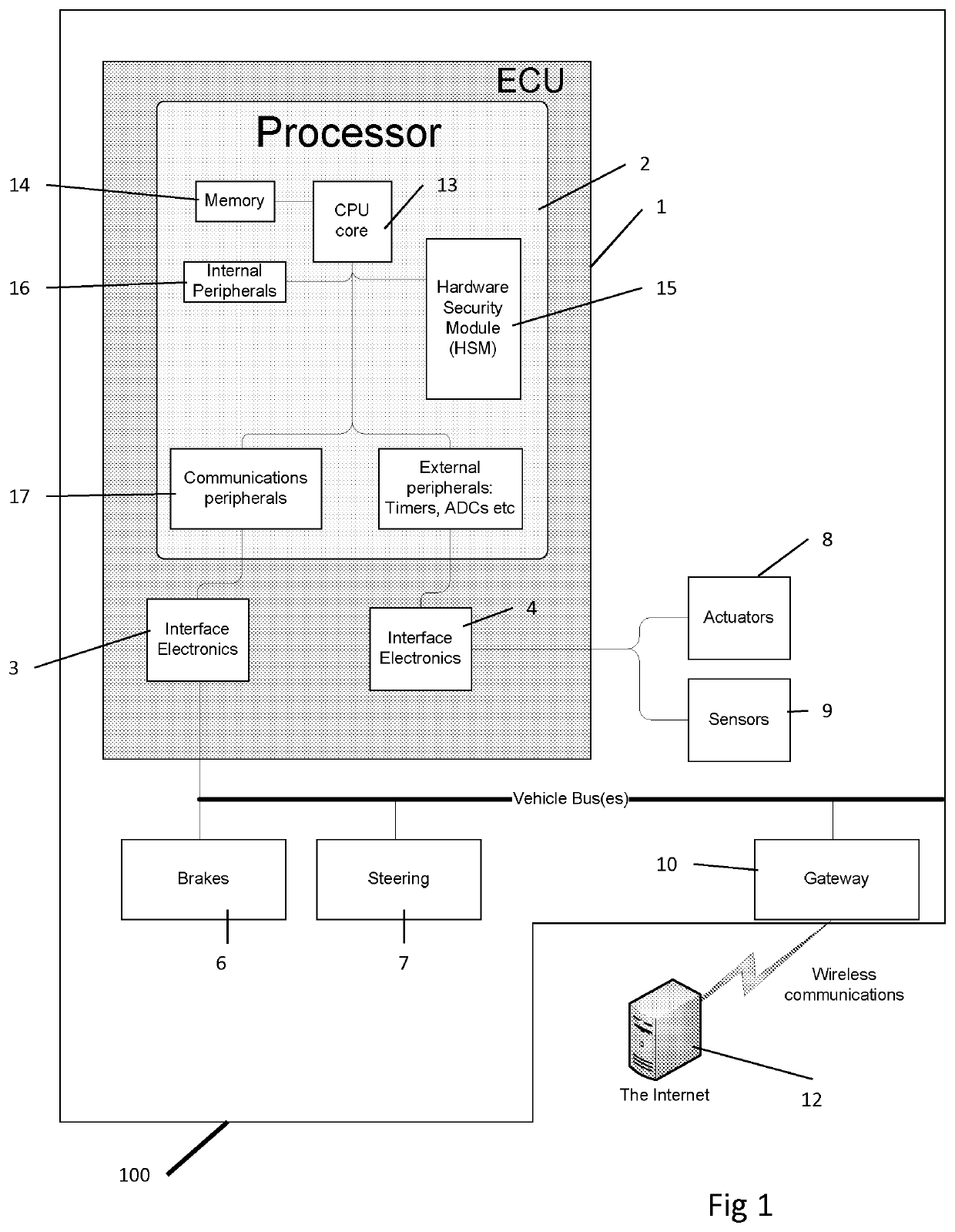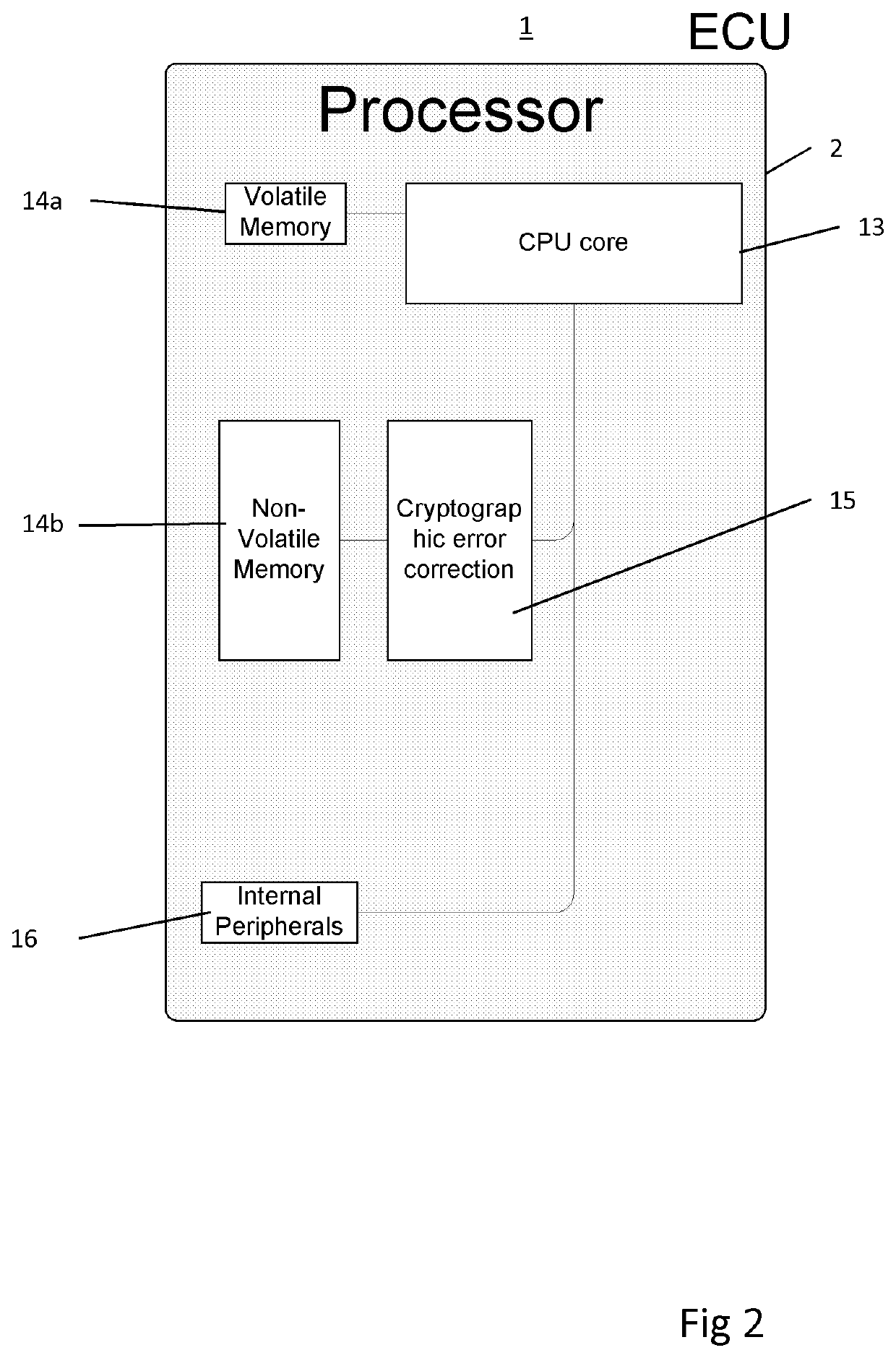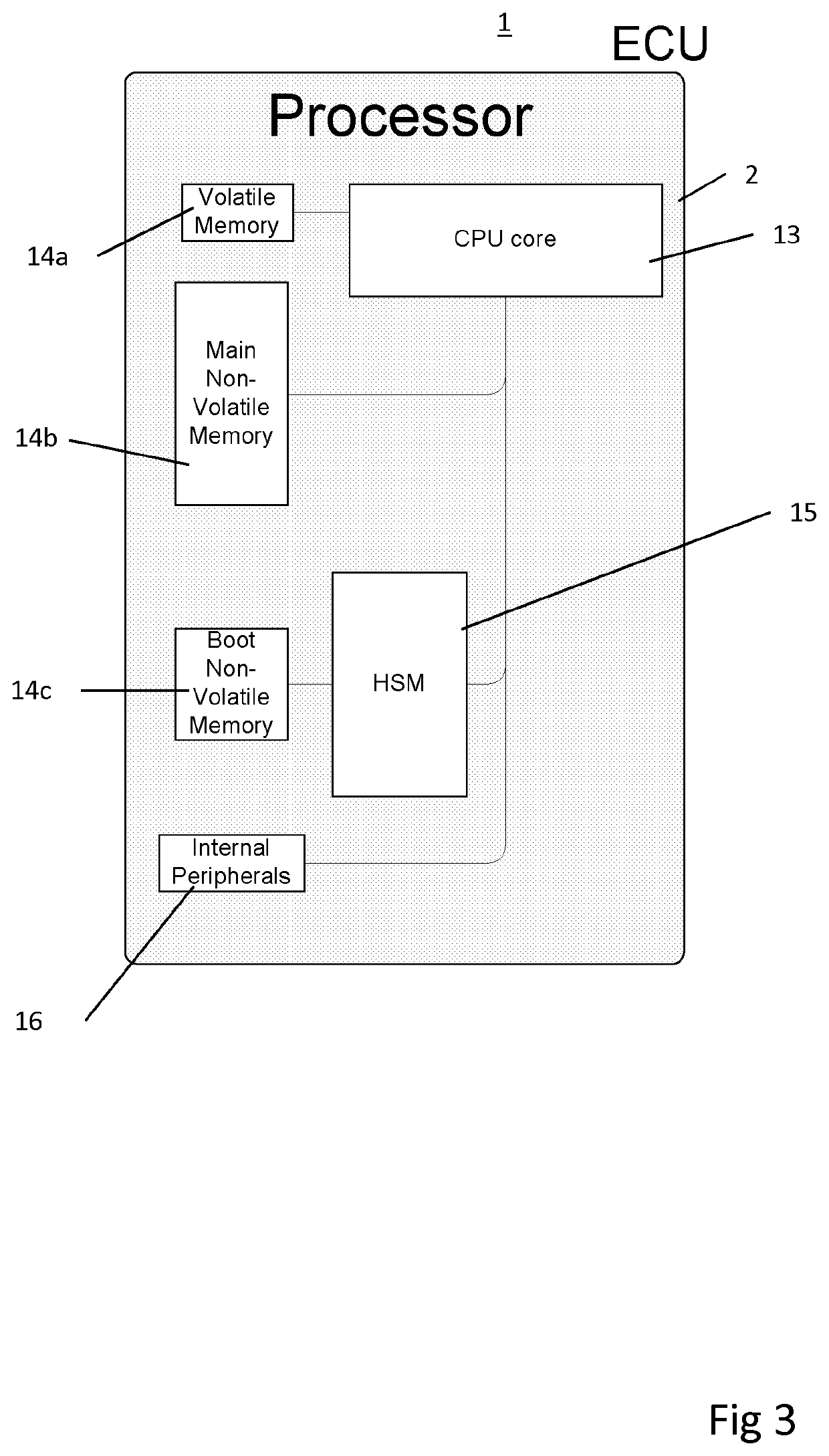Electronic control units for vehicles
a technology of electronic control unit and vehicle, applied in the direction of instruments, error detection/correction, computing, etc., can solve the problems of rogue software operation, no option is entirely palatable, and no protection of local functions
- Summary
- Abstract
- Description
- Claims
- Application Information
AI Technical Summary
Benefits of technology
Problems solved by technology
Method used
Image
Examples
first embodiment
[0101]In the invention, shown in FIG. 2 of the accompanying drawings, the memory 14 of the processor 2 is provided as volatile memory 14a (that is liable to lose its contents when power is lost) and non-volatile memory 14b (which is not liable to lose its contents when power is lost). In this embodiment, the HSM 15 mediates between the processor core 13 and the non-volatile memory 14b, such that all reading of the non-volatile memory 14b passes through the HSM 15.
[0102]As such, the HSM carries out cryptographic error correction on all data read from the non-volatile member 14b for execution by the processor core 13. Cryptographic error correction is a technique that makes use of cryptographic keys to correct errors in data, as is described in the Doctor of Philosophy (PhD) thesis of Christopher Jason Peikert of the Massachusetts Institute of Technology, entitled “Cryptographic Error Correction”.
[0103]In the present case, each cacheline of data stored in the non-volatile memory 14b w...
second embodiment
[0105]In a second embodiment, shown in FIG. 3 of the accompanying drawings, the memory 14 of the ECU 1 is provided as volatile memory 14a, main non-volatile memory 14b and boot non-volatile member 14c. The HSM 15 mediates all reads from the boot non-volatile memory 14c. The boot non-volatile memory 14c holds a bootloader for the ECU 1; that is, the first code that is executed by the processor core 13 on booting of the ECU 1. The bootloader is encrypted using a key, which is stored in the HSM 15.
[0106]In order to boot, the HSM 15 decrypts the bootloader using the key stored in the HSM 15 (although a public / private key pair could be used instead). The HSM transmits the decrypted bootloader to the processor core 13 for the processor core to execute. The HSM can also check that the bootloader has been correctly decrypted and that the decrypted bootloader matches its cryptographic signature using the same key that the HSM holds. The HSM 15 will only allow the processor core 13 to execute...
fourth embodiment
[0109]In the invention, shown in FIG. 5 of the accompanying drawings, the processor core 13 can directly read and write from the non-volatile memory 14b. However, the HSM 15 regularly checks the contents of the non-volatile memory 14b. Typically, it will do this whenever otherwise idle.
[0110]Each block of data in the non-volatile memory 14b will have been signed using a (typically private) key not stored in the ECU 1. On each check, the HSM 15 checks that the signature of each block verifies the contents of each block, using a key (typically public) that is stored in the HSM 15.
[0111]If it is determined that the data in the non-volatile memory 14b does not match its signature, the HSM 15 will read a fallback image from external memory 21. The external memory is still contained in the ECU 1, but is on a different integrated circuit to the processor 2. This fallback image is written to the non-volatile member 14b. The fallback image will also be signed, and the HSM 15 will use its key...
PUM
 Login to View More
Login to View More Abstract
Description
Claims
Application Information
 Login to View More
Login to View More - R&D
- Intellectual Property
- Life Sciences
- Materials
- Tech Scout
- Unparalleled Data Quality
- Higher Quality Content
- 60% Fewer Hallucinations
Browse by: Latest US Patents, China's latest patents, Technical Efficacy Thesaurus, Application Domain, Technology Topic, Popular Technical Reports.
© 2025 PatSnap. All rights reserved.Legal|Privacy policy|Modern Slavery Act Transparency Statement|Sitemap|About US| Contact US: help@patsnap.com



